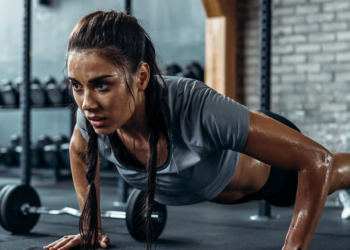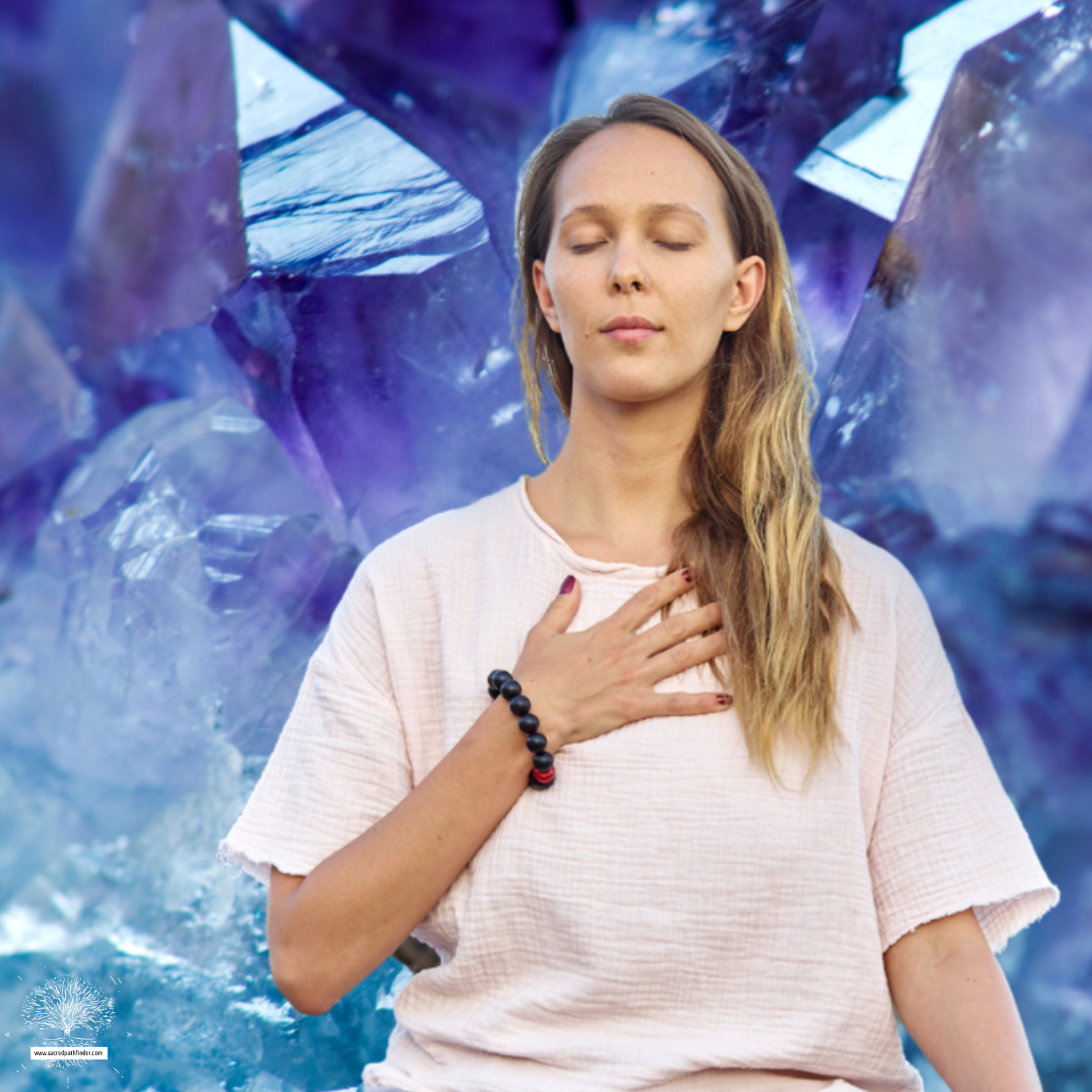Did you know yoga, Pilates, qigong, and tai chi are big in the US1? They help balance body, mind, and spirit. This makes them great for feeling good all over.
These workouts are great for staying fit and feeling happy. They help with stress and make life better.
Yoga started in the US in the late 1800s. Pilates came in the 1920s1. Both focus on strength, stretching, and breathing.
Qigong comes from China and mixes movement with breathing. Tai chi is more about movement1.
It’s key to know what each workout is about. Pilates can hurt you because it’s so precise1. Tai chi needs lots of space and is hard for newbies.
Qigong might make you feel tired or sore sometimes1. Pilates quality can vary, so find a good teacher.
Mind-Body Exercises: Ancient Practices for Modern Wellness
Yoga, Pilates, and tai chi have been around for centuries. They help us feel whole by connecting body, mind, and spirit. These old ways have changed to help us live better today.
Exploring the Origins and Principles of Yoga, Pilates, and Tai Chi
Yoga comes from Hinduism and is very old. It started in India and came to the US in the late 1800s. It’s known for its poses, breathing, and meditation2.
Pilates was made by Joseph H. Pilates in the 1920s. It makes your core strong, improves flexibility, and helps you focus. It uses special movements and breathing3.
Tai chi is a form of qigong from China. It’s known for its slow, flowing moves. It helps you connect your body and mind.
Each exercise has its own special rules. Knowing these rules helps you choose what’s best for you.
The Benefits of Mind-Body Workouts
Mind-body exercises like yoga, Pilates, and tai chi are great for your body and mind4. They make you more flexible, strong, and balanced. They also help you relax and think clearer.
Improved Flexibility, Strength, and Balance
Yoga, Pilates, and tai chi work many muscles at once4. This makes your muscles stronger without hurting your joints. They’re good for people with joint problems or recovering from injuries.
Doing these exercises regularly makes you more flexible and balanced. This lowers the chance of falling or getting hurt5.
Reduced Stress and Increased Relaxation
These exercises help you relax by calming your nervous system4. They can make you sleep better, feel less anxious, and be happier overall5.
Enhanced Mental Clarity and Mindfulness
Yoga, Pilates, and tai chi improve your focus and mindfulness4. They help you think better, make smarter choices, and feel emotionally better5.
Adding mind-body exercises to your workout routine is good for your body and mind45. They help you get stronger, more flexible, and less stressed. Plus, they make you more mindful and focused.
Choosing the Right Mind-Body Workout for You
Choosing the right mind-body exercise is key. You need to think about your goals, needs, and likes. Yoga, Pilates, and tai chi each have their own benefits. The best one for you depends on your fitness goals and what you like.
Assessing Your Goals, Needs, and Preferences
Yoga is easy to find, unlike Pilates, tai chi, or qigong. But, tai chi needs a lot of space, best outside. This might be hard for some people6.
Pilates can be risky because it needs a lot of control and strength. Qigong is great for those who can’t move much. You can do it lying down or even just thinking about it.
The best workout for you depends on your goals, health, and what you like6. Thinking about these things helps you pick the right exercise for you.
Yoga: A Journey of Body, Mind, and Spirit
Yoga is an ancient practice that combines physical, mental, and spiritual benefits. It offers a holistic approach to wellness. Yoga has many styles, each with its own focus and intensity level. From Hatha yoga’s gentle, meditative pace to Vinyasa’s flowing movements, there’s something for everyone7.
The Physical and Mental Benefits of Yoga
Yoga improves posture, flexibility, and heart rate. It also helps with digestion, sleep, muscle tension, and weight management7. Yoga reduces stress, anxiety, insomnia, and blood pressure. It boosts mindfulness, emotional regulation, self-esteem, and confidence7.
The mind-body connection is key in yoga. It helps people tune into their thoughts, feelings, and well-being8.
Different Styles of Yoga: Hatha, Vinyasa, and Beyond
In the United States, Hatha, Vinyasa, and Ashtanga (Power Yoga) are popular. Hatha yoga is slow-paced and great for beginners. It focuses on physical postures and breath control7.
Vinyasa is dynamic and flows with breath and movement. It includes challenging poses and sequences7. Integral Yoga combines breathing, meditation, and chanting for a holistic experience7.
Yoga lets you explore your physical, mental, and spiritual well-being. It fosters mindfulness, self-awareness, and a connection to the present. Yoga transforms the body, mind, and spirit89.
Pilates: Precision, Control, and Total Body Conditioning
Pilates is a special exercise system that has been around for over 100 years10. It was created by Joseph H. Pilates in the early 1900s. This practice focuses on stretching and strengthening the body. It also emphasizes breathing and meditation11.
The Pilates method, also known as “Contrology,” aims for balanced muscle development. It also works on flexibility and joint range of motion11.
At the core of Pilates are six key principles: Breath, Concentration, Control, Precision, Center, and Flow10. These principles guide the exercises. They engage many muscle groups to tone and strengthen the body10.
Pilates is often used in rehab for seriously injured patients. It helps rewire the brain and establish automatic movement patterns over time10.
Pilates exercises can be done in group mat classes or small reformer classes. The reformer equipment was designed by Joseph Pilates himself11. But, it’s important to practice Pilates with a skilled instructor. The method requires a lot of control, precision, and core strength10.
Improper technique can cause injuries. So, finding a qualified Pilates teacher is key for beginners and experienced practitioners alike.
Pilates can improve your flexibility, build strength, and enhance your overall well-being11. It focuses on the mind-body connection. It also improves posture, balance, and athletic performance1110.
Pilates Principles, Benefits, Conditioning: An Evidence-Based Review11The History and Principles of Pilates: Exploring the Mind-Body Connection
Tai Chi: Harmonizing Body and Mind through Gentle Movements
Tai chi is a form of qigong from ancient China. It’s a popular exercise that combines slow movements, deep breathing, and focus. It’s based on Taoism and the flow of Qi, or vital energy.
It helps improve balance, flexibility, and reduces stress. These benefits are great for anyone looking to feel better.
The Principles and Movements of Tai Chi
Tai chi focuses on slow, flowing movements. It uses muscles and joints to improve flexibility and balance. This is especially good for older adults to prevent falls12.
The meditation part of tai chi calms the mind. It helps reduce stress and brings peace and relaxation12.
Tai Chi for Balance, Flexibility, and Energy Flow
Tai chi’s movements help the body and mind work together. It makes balance and flexibility better12. It also helps energy flow smoothly through the body13.
It can lower anxiety and depression12. It helps people with Parkinson’s, fibromyalgia, and knee osteoarthritis12. Tai chi is easy to do and fits into daily life12.
Tai chi is great for physical health, stress relief, and connecting body and mind. Its gentle movements and focus on harmony make it a powerful addition to your routine1314.
Mind-Body Workouts for Beginners
If you’re new to mind-body exercises, start with something gentle. Yoga, Pilates, and tai chi are great for beginners. They have instructors to teach you the right way to do things15.
These practices use physical poses, breathing, and meditation. They help you become more flexible, strong, and clear-minded15.
Getting Started with Yoga, Pilates, and Tai Chi
Many places offer classes for beginners. They teach the basics of poses, breathing, and meditation15. Pilates classes focus on your core, flexibility, and endurance15.
For tai chi, find an instructor to guide you. They’ll help you learn the slow, flowing movements15.
Start slow and listen to your body. It’s okay to ask questions. Finding the right practice is important for your wellness journey15. With patience and practice, you’ll enjoy the benefits of these exercises16.
Integrating Mind-Body Workouts into Your Routine
Adding yoga, Pilates, and tai chi to your routine can help a lot17. It’s important to pick something you like and can do often17. You might go to classes, practice at home, or do both17.
It takes time to get good at these exercises17. Being consistent is key. Pick something that fits your life and makes you happy.
Adding mindfulness to your workouts can make them better17. Start with breathing exercises and listen to your body17. Trust yourself and be thankful. This makes workouts more enjoyable and safe17.
Trainers can help make these workouts even better17.
The mind-body connection is very powerful18. Our brains have a special network for it, called SCAN18. It helps us recover from injuries and feel better18.
Using things like guided imagery and positive thinking can help a lot18. It makes us feel better and perform better in sports18.
Finding the right mind-body routine is a journey17. Stay consistent, mindful, and patient17. This way, you can enjoy the benefits of these practices17.
Remember, choose something that fits your goals and likes17. This way, you can keep doing mind-body workouts17.
Mind-Body Workouts for Specific Health Concerns
Yoga, Pilates, and tai chi are more than just trends. They help people with health issues. These exercises can improve many conditions, like substance abuse and back pain.
Yoga, Pilates, and Tai Chi for Improved Health
People with substance use disorder see big improvements with these workouts19. They also help with diseases like diabetes and Parkinson’s. Even back pain gets better with these exercises19.
Yoga is great for back pain because it stretches and strengthens19. Pilates helps with joint issues by improving core and mobility19.
Always talk to a doctor before starting these workouts. Find an instructor who can adjust the exercises for you. This research shows how yoga, Pilates, and tai chi can help many health problems19.
Creating a Mind-Body Practice at Home
Starting a mind-body practice at home is easy and helpful. It can help you feel less stressed, move better, and think clearer. Adding these practices to your day can really change your life20.
Tips for Practicing Yoga, Pilates, and Tai Chi at Home
Yoga just needs a mat and room to move. You can find yoga classes online or on apps. They let you practice at your own speed21.
Pilates can be done at home with a mat or small tools. Tai chi, which needs more space, can be done at home with breathing and thinking exercises.
It’s key to do mind-body workouts right at home. Adding mindfulness and meditation makes it even better. This way, you get the full benefit2021.
Practicing at home lets you make your routine fit you. You can start or keep going, based on what you want and can do21.
Having a special place and time for your practice helps you stick to it. This can make you feel better, sleep better, and feel more balanced21.
The Mind-Body Connection: Cultivating Mindfulness and Self-Awareness
Yoga, Pilates, and tai chi help us connect our mind and body. They teach us to be in the moment. This makes us more mindful and aware of ourselves22.
These exercises mix movement, breath, and meditation. They help us feel our body and emotions better22. This connection improves how we handle stress and feel our emotions22.
These practices help us understand ourselves better. They lead to personal growth and self-awareness.
Eastern traditions like Chinese medicine see the body and mind as one23. But Western medicine used to see them as separate23. Now, we’re learning the value of connecting them again23.
Mindfulness and meditation are becoming more popular23. They help us stay present and calm our minds23. These practices can be part of our daily life, improving our health23.
Connecting our mind and body brings many benefits22. It lowers stress, improves health, and boosts our mood22. It helps us make better choices and handle life’s challenges better22.
Mind-Body Workouts for Stress Reduction and Relaxation
Yoga, Pilates, and tai chi are great for managing stress. They help you feel more balanced and relaxed. These activities can lower stress hormones and improve sleep24.
They also make your body feel better. You’ll be more flexible and have stronger muscles24. Plus, they help you focus and feel happier24.
Deep breathing and controlled movements are key parts of these workouts. They help you stay in the moment. This can make you feel more calm and focused24.
There are many ways to relax in these practices. You can try deep breathing, muscle relaxation, or visualization25. These can lower your heart rate and ease pain24.
Don’t worry if one technique doesn’t work for you. Try different ones until you find what works best24. With practice, you can handle stress better and feel better overall24.
Managing stress is very important. Chronic stress can harm your body and mind26. The American Psychological Association found that stress levels are still high since 202026.
Yoga, meditation, and tai chi can help a lot. They reduce stress and improve your well-being26.
Combining Mind-Body Workouts for Maximum Benefits
Yoga, Pilates, and tai chi each have special benefits. Mixing them can make these benefits even better for your body and mind27. By blending different practices, you can make a fitness plan that meets many needs28.
Pilates adds strength and precise moves. Yoga brings flexibility and focus. Tai chi offers calm and flow. Mixing these can lead to a well-rounded health routine27.
For those with arthritis, yoga is especially helpful27. A 2019 study showed yoga users had better physical function and worked more than non-users27. Tai chi also helps, improving range of motion and strength27.
Qigong, a form of tai chi, also helps with arthritis. It reduces pain and stress, and boosts confidence and sleep27.
Mind-body exercises are great for mental health too28. Over 20% of U.S. adults have a mental illness. Stress can cause anxiety and heart disease28.
Exercise, like mind-body practices, can fight depression. But, starting and sticking to a routine can be hard28. Mixing practices can help overcome these challenges28.
By mixing yoga, Pilates, and tai chi, you can create a powerful fitness plan2728. It can help with health issues, stress, or just feeling better overall. Exploring these practices can lead to a more balanced life.
Finding the Right Instructors and Classes
Starting my mind-body exercise journey means finding great instructors and classes. For yoga, I look for teachers who know how to align and modify poses safely29. Pilates needs a skilled teacher to guide me through its precise movements29. Tai chi requires a teacher who teaches the right form and techniques29.
I’ll research local studios and read reviews to find the right class30. Trying out different classes will help me find a rewarding experience30. I’ll also remember that fitness instructors often work on their own and need to promote themselves29.
I want to find classes that match my goals, like improving flexibility or finding peace30. By choosing carefully, I can start a journey of mind-body wellness that’s just right for me30.
FAQ
What are the most popular mind-body exercises in the US?
What are the origins and principles of yoga, Pilates, and tai chi?
What are the key benefits of mind-body exercises like yoga, Pilates, and tai chi?
How do I choose the right mind-body workout for me?
What are the different styles of yoga and their benefits?
What is the focus of Pilates and how is it practiced?
What are the principles and benefits of tai chi?
How can beginners start with mind-body exercises?
How can I incorporate mind-body exercises into my routine?
How can mind-body exercises benefit individuals with specific health concerns?
How can I create a mind-body practice at home?
How can the mind-body connection benefit me?
How can mind-body exercises help with stress reduction and relaxation?
How can combining different mind-body practices benefit me?
How do I find the right instructors and classes for mind-body exercises?
Source Links
- Yoga, Pilates, tai chi, qigong — what’s best for me? | CNN
- Ancient Health Practices for Modern Wellness – Thailand Foundation
- The Habit of Excellence: Ancient Greek Exercise Science For Body, Mind, And Spirit
- Exercise Has Benefits for Mind, Body and Spirit – Harvard Pilgrim Health Care – HaPi Guide
- Benefits of Mind-Body Exercise | Yoga | Barre — Healthtrax
- Mind-Body Practices: Examples & Why You Should Pick One
- Yoga: Connecting the Mind, Body, and Spirit | SoCal Mental Health
- The Mind-Body-Soul Balance – Desert Yoga Therapy
- Finding Balance In Yoga: Mind, Body, And Spirit – Daniel Gracie Academy
- Pilates Principles and fundamentals – 6 guiding principles of Pilates NOT by Joseph!
- Pilates – OLD SCHOOL PILATES
- Slow and Steady: The Health Benefits of Tai Chi
- What is Tai Chi? – What Are The Health Benefits?
- Tai Chi
- “Unleash Your Potential: 9 Mind-Body Workouts for Perfection”
- 10 Exercises to Improve Your Body and Mind
- Incorporating Mindfulness Into Your Fitness Routine
- Yep, the Mind-Body Connection Is a Real Thing—Here’s How to Strengthen It
- Mind-Body Exercises
- Can mindfulness exercises help me?
- Mind-Body Exercises: Finding Balance Between Mind And Body
- Mind-Body Connection: The Role of Meditation and Mindfulness
- The Amazing Effects of the Mind-Body Connection
- Relaxation techniques: Try these steps to lower stress
- Relaxation Techniques for Stress Relief – HelpGuide.org
- No title found
- No title found
- Exploring the Mind-Body Connection: Exercise and Mental Health
- Behind The Fitness Industry: The Truth About Life As A Fitness Instructor » Mind Body Badass
- How to Find the Right Fitness Class for Your Schedule?






